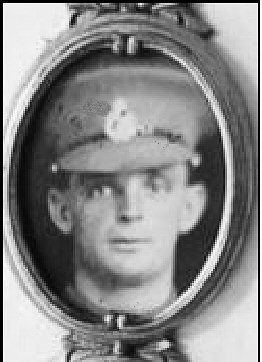| Other Info | He was born in 1893.
He was awarded the D.C.M (citation published in London Gazette on the 10th January 1920). His citation read: "For conspicuous gallantry. When the left line was held up by machine gun fire during the attack on Keelinberg Ridge, on the 29th September 1918, he went alone round the flank of the pill-box under very heavy fire, putting the machine gun out of action and capturing six prisoners."
THE REGIMENTAL HISTORY SHOWS THE FOLLOWING:
At dawn next morning (29th September 1918) the British guns opened fire; and at 7.0 a.m. the 4th Worcestershire rose to their feet, soaked to the skin, stiff with the cold, but still full of fight. The companies opened out into "artillery formation" advanced through the line of the 2nd Leinster, and pushed on to the attack. The rain had ceased, the nearest enemy were falling back, and the troops went forward splendidly up the slope past Oude Kruiseecke and then forward along the high ground under a galling fire from machine-guns in front. Rossignol Cabaret was taken, and the leading platoons advanced up the slope of the ridge on which stands the little village of Koelenberg. There, for the first time that day, the advance met definite opposition. The ridge was strongly held and the open slopes were swept by the fire of several machine-guns.
The platoons worked forward from cover to cover to attack the machine-gun posts. Captain A. H. Bowman brought his leading platoons into action against one concrete blockhouse: then, discovering a way of approach he made his way forward, accompanied only by one runner, surprised the garrison of the blockhouse and forced them to surrender, twelve in all (Capt. Bowman was awarded the M.C.). Further to the left Sergeant W. J. Smith single-handed attacked another blockhouse, creeping round the flank of the building under very heavy fire and capturing the six occupants (Sergt. Smith was awarded the D.C.M.). Thanks to those brave efforts the advancing platoons were able to gain some ground; but the machine-guns on the upper slopes were so posted as to sweep all the intervening ground, and by 4 p.m. the attack was definitely held up.
Word was sent back to the artillery, and a bombardment was arranged. At 7 p.m. the guns opened fire, and as their shells struck along the ridge the platoons again pressed forward to the attack; but the bombardment was not heavy enough to beat down the German machine-gunners, and although one or two of the nearer posts were rushed, the hail of bullets from the higher ground soon forced the attackers to seek cover. A few prisoners had been taken (Twenty-five in all, including those taken by Capt. Bowman and Sergt. Smith) but the enemy's defence was not broken, and the attempt had cost the Battalion dear. The casualties included two of the company commanders, Captain G. P. O'Donovan and Captain C. E. Hackett, with several of their subalterns (Killed, 2/Lt. J. Cowherd, M.C. Wounded, Capt. G. P. O. Donovan, M.C., Capt. C. Hackett, M.C., D.C.M., Lt. H. N. Newey, 2/Lt. D. L. Downes, 2/Lt. J. C. Marriott.), and the loss of those two fine fighting leaders had a dispiriting effect on their men.
|
|---|
